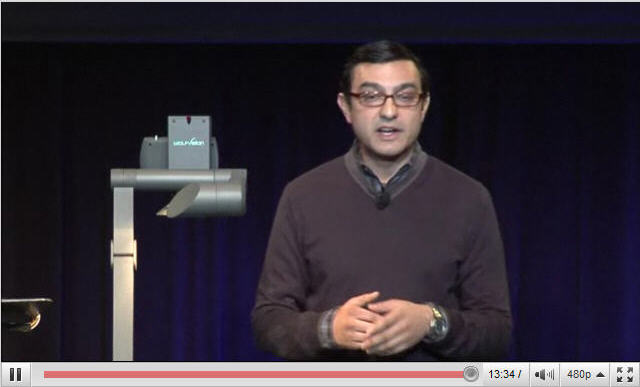Google has unveiled its Twitter and Facebook killer in the form of Buzz, a technology that not only makes your Gmail social but makes location the new heart of social networking via a Buzz layer on Maps on iPhone and Android devices.
The new Buzz technology Google promises will bring to an end the era of the static email inbox and allow live content to sit within your inbox.
The company has introduced three new products: the overall Buzz technology for Gmail users, a version of Buzz for the iPhone and Android and a new version of Google Mobile Maps, with a Buzz layer to add information based on location with pictures and ‘see on map’ capabilities.
The Buzz product will be loaded to all Gmail users’ accounts from today and Google confirmed an enterprise version of the product will soon be unveiled which it promises will “change business communications forever.”
Via a live web conference, the company said Buzz will allow Gmail users to engage in public and private sharing through inbox integration. “Your inbox will no longer be static information, it will be live,” a spokesman for the company said.
“With the amount of social media on the web it’s easy to miss stuff – Buzz attempts to solve this. Organising the world’s social media problems is the problem Google loves to solve.
Vic Gundotra, VP of engineering of Google, said the company is immediately taking Buzz beyond just Gmail to allow users to consume it on mobile devices.
“Google found relevancy by finding web pages and ranking them.
“Social media sees millions and millions of social expressions – tweets, updates – there are a variety of ways digitally to share information but it is easy to start drowning; it’s a relevancy and ranking problem.

“Is there a way to make sense out of all these forms of social expression? Are there signals we can use to algorithmically find what is relevant to you? Location is a powerful signal for relevancy.
“In the digital world, we have not yet elevated location as a powerful signal for relevancy. Why not? Computers seek location but in a different language.
Gundotra said that Buzz for smart phones will query your phone for its location and send the data back to the Google cloud. “Our servers will do their best to turn this into a Google phrase you’ll know like a place – but do it in an instant?”
Gundotra said that Android and iPhone smart-phone users can download Buzz by going to buzz.google.com on their browser.
He demonstrated how a message would flash up on a mobile screen. “If I am at Google I select that and it snaps to that location and tells my friends.” He also demonstrated how it was possible to post to Buzz by speaking into your smart phone.
“Your comments are effectively geo-tagged. Users can see the most interesting Buzz based on their location.”
Gundotra also demonstrated a new version of Google Mobile Maps that includes a Buzz layer. “At a bottom corner of your screen you see the Buzz icon and can post buzz – all the magic of snap to your location!”
Google said internal use of Buzz has changed the way people communicate in the company. It said in coming months it will launch Buzz as an enterprise product it believes will change the way businesses communicate around the world.
By John Kennedy
